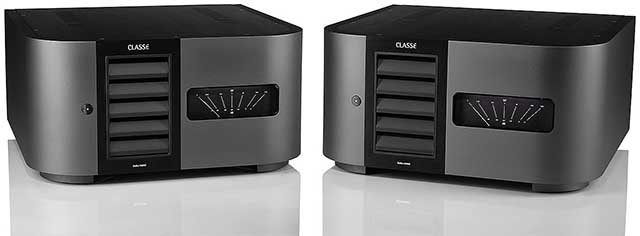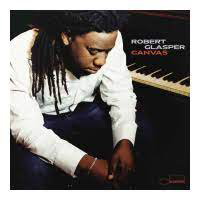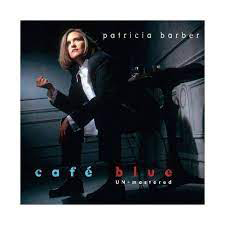Classé Audio Delta PRE and MONOs amplifiers Page 2


_1.jpg?KeepThis=true&TB_iframe=true&height=430&width=700)
Here is where everything changed. After wrestling these behemoths into position in my listening room, and believe me, with the nearly 100-pound MONOs not having any handles, this was no small feat. But once connected to my Tekton Double Impact SE loudspeakers, getting the system up and running was a breeze. It was late when I turned them on and ran the cable channel Music Choice: R&B through them, keeping the volume at a late-night comfortable -45.00 dB. Now typically, that volume level will get you some low-end from your music, but not much. But when “All Day Music” from the soul supergroup War came on, I was shocked at just how much low-end energy and music I was getting. It was then that I remembered that the first 35 or so watts of the MONOs were pure class-A. Suddenly I was reminded of the venerable DR3 and some of the other genuinely great class-A amps from the past and what made them so memorable. But let me get back to describing these beauties before getting into the music.
At around 18″ wide x 19″ deep x 9″ tall, the Delta MONOs are no joke. And the basic black form that looks so good on the Delta PRE is twice as impressive on the MONOs. But there is even more to the design of the MONOs that is a departure from previous Delta designs. First, you can’t help but be drawn to the beautifully backlit output meters displayed on the right side of the front panels. The output power is shown as watts into an 8-Ohm load. As a point of reference, the first-meter mark to the right of center is 30 watts. When the pointer is left of that mark, the amplifier is operating in class-A. The backlight of the meter can be adjusted to one of three levels of brightness or can even be turned off. Outside of those initial 35 watts of class-A, the MONOs are rated at 300 watts class-A/B into 8 Ohms, 600 watts into 4 Ohms, and 100 watts into 2 Ohms, and as Dave Nauber himself told me, “it does so with tons of power.”
 The other significant change is the Intelligent Cooling Tunnel (ICTunnel Air Intake) system which removes heat from the amplifier circuitry by using a fan to pull cool air through the intake on the front panel of the amps. The cooling system helps the amp to maintain proper operating conditions and allows you to place it in cabinets or racks where conventional amps can’t go without, wait for it… fans!
The other significant change is the Intelligent Cooling Tunnel (ICTunnel Air Intake) system which removes heat from the amplifier circuitry by using a fan to pull cool air through the intake on the front panel of the amps. The cooling system helps the amp to maintain proper operating conditions and allows you to place it in cabinets or racks where conventional amps can’t go without, wait for it… fans!
Let me clarify something about the use of fans. In lesser designs, there have been issues with fan noise in amps. The fan that Classé uses works at a relatively slow speed so as not to create any noise. The only other thing on the front panel is a standby button which sits just to the left of the ICTunnel. Oh, by the way, the front panel vent for the ICTunnel is removable for cleaning. Sort of like the lint catcher on your dryer. Nice touch.
In the upper right corner of the rear panel of the MONOs is where you’ll find one RCA and one XLR INPUT connector. To the left of that is the ICTunnel exhaust port. This is where warmth from the amplifier is pulled through and out of the unit, though you hardly feel anything blowing out of that port. To the left of the exhaust port are a pair of high-quality Furutech Torque Guard five-way speaker binding posts. All RCA connectors for both Delta components are rhodium-plated copper and also designed by Furutech. The XLR connectors are by Neutrik. Above and left of the speaker posts is the IEC power cord receptacle.
On the left side of the amps are your network, home integration, and control connections (IR input and output, DC Trigger input and output, RS232 control port, RJ-45 – DB9 female adapter). There is also a USB port and Ethernet port. The USB port allows you to use a USB stick to update amplifier firmware, and the Ethernet port allows you to connect to a local network to update features via an IP address.
Inside the amp, you will find a massive, vertically mounted, 2.35kVA toroidal transformer. This transformer is made of 540 meters of copper and weighs nearly 37 pounds. Mounting the transformer vertically helps prevent any electromagnetic noise from impacting the audio circuitry. Also inside is the ICTunnel, a nicely made soft silver-colored aluminum tunnel that runs the length of the chassis. The MONOs also use 32 output transistors and 22 Mundorf 4-pole storage capacitors, which discharge and refill current extremely quickly. Finally, one more nice touch I wanted to mention was the use of specially designed damped feet from Navcom that are used on both the MONOs and the PRE. There are thoughtful design touches and the highest-quality parts used throughout these components, which is reflected in their high, but not high (IMHO), costs.
So now it’s time to put these components together, fire up some music and see what all of this great stuff means in terms of music (I miss that magazine).
About the Music
The Delta PRE and MONOs arrived not long after adding the fabulous Tekton Double Impact SE loudspeakers to my reference system. They are replacing my long-loved Maggie MG20s. The Maggies aren’t going anywhere, mind you, but I needed to add a pair of speakers that do not require four channels of amplification the way the Maggies do. I also had to use an electronic crossover, which was the Pass Labs XVR-1. So, where once I was using the Maggies with the XVR-1, a pair of Bel Canto Ref1000M mono amps (tweeter) and M300 mono amps (midrange/bass), I am now using the Tektons, the Delta PRE, and Delta MONOs. Another change was going from using the Vitus Audio RD-100 DAC linestage, Pass Labs XP-15 phonostage, and Bricasti M5 Network Streamer. You are starting to see the impact that the Delta gear is having on my system? By adding the three boxes, I’m taking out seven. And we haven’t even considered the impact on cabling and shelf space.
 So again, the question is, how have these changes impacted my system? I had been listening to my system for a couple of weeks, mainly as background music during the day while working from home like so many others during this pandemic. So when I finally settled in for a night of serious listening and note-taking, I knew the system would be fully broken in. I began my listening sessions by opening my Apple Music library on my MacBook Pro and playing Robert Glasper’s album, Canvas. Glasper has been one of my favorite jazz pianists over the past decade, and this album is a big reason why. His highly personalized performances were the perfect way for me to start getting into the Delta gear. The first track that I listened to was the title track, “Canvas.” Glasper and his bandmates Vicente Archer (bass) and Damion Reid (drums) play music that is intimate and really draws the listener in if rendered properly by your system. I got that and more.
So again, the question is, how have these changes impacted my system? I had been listening to my system for a couple of weeks, mainly as background music during the day while working from home like so many others during this pandemic. So when I finally settled in for a night of serious listening and note-taking, I knew the system would be fully broken in. I began my listening sessions by opening my Apple Music library on my MacBook Pro and playing Robert Glasper’s album, Canvas. Glasper has been one of my favorite jazz pianists over the past decade, and this album is a big reason why. His highly personalized performances were the perfect way for me to start getting into the Delta gear. The first track that I listened to was the title track, “Canvas.” Glasper and his bandmates Vicente Archer (bass) and Damion Reid (drums) play music that is intimate and really draws the listener in if rendered properly by your system. I got that and more.
The Delta gear portrayed this music in a way that was new to me, although I’ve heard it dozens of times before. The piano had amazing richness and allowed me to feel the sound of the hammers striking the piano strings, but also the texture of the vibrations on the strings. Another song from this same album, “Enoch’s Meditation,” provided the same result, except this time, there was also the depth of Reid’s drum work. This is where the MONOs showed their strengths. The sound of the kick drum was unforgettable. It was deep and very tight, and the percussive nature of the entire drum kit was true to life. I remembered hearing it years ago when they performed at Joe Segal’s Jazz Showcase here in Chicago. Great performances are unforgettable, and that’s what the Delta gear provided.
 Another song from my Apple Music library that would demand the best from the Classé Delta gear is “Easy Money” from the Lars Danielsson Trio. This live digital download is one of my favorite recordings. Danielsson is a brilliant bassist, but this song is particularly memorable for Leszek Mozder’s dynamic piano playing. I’ve seen and heard this performance on a couple of YouTube channels, so I know how the soundstage is usually setup. The Delta PRE nails it brilliantly. Remember, I’m running an Ethernet cable directly into the PRE and bypassing the Bricasti M5. The Ethernet connection is used to enable streaming of audio using Apple’s AirPlay or DLNA. The difference in going directly into the Ethernet port was noticeable. I experienced greater clarity around the instruments, and the sense of the venue was fantastic. I now feel a need to invest in a higher quality Ethernet cable to see how much more I can get from my downloads.
Another song from my Apple Music library that would demand the best from the Classé Delta gear is “Easy Money” from the Lars Danielsson Trio. This live digital download is one of my favorite recordings. Danielsson is a brilliant bassist, but this song is particularly memorable for Leszek Mozder’s dynamic piano playing. I’ve seen and heard this performance on a couple of YouTube channels, so I know how the soundstage is usually setup. The Delta PRE nails it brilliantly. Remember, I’m running an Ethernet cable directly into the PRE and bypassing the Bricasti M5. The Ethernet connection is used to enable streaming of audio using Apple’s AirPlay or DLNA. The difference in going directly into the Ethernet port was noticeable. I experienced greater clarity around the instruments, and the sense of the venue was fantastic. I now feel a need to invest in a higher quality Ethernet cable to see how much more I can get from my downloads.
Now it was time to move on to some vinyl. The Pass Labs XP-15 has been my reference for years, and I suspected that it would be the one piece that could hold up well to the Classé Delta PRE. I had only recently added the Air Tight PC-7 low output moving coil cartridge to my analog rig and had reached a solid level of comfort with it. So the Delta PRE’s phono section, with all of its idiot-proof cartridge adjustments, was going to have to be special. Initially, it wasn’t. As I mentioned, the Pass had become very solidly entrenched in my system. So the Delta PRE’s phono section would have to play catch up. I spent an entire weekend working with the PRE’s menu and finally settled on selecting the “low-output moving coil” option and the loading at 100 Ohms. Strangely, the biggest improvement came when I switched out my Soundstring Gen II Platinum cable between the tonearm and phono input and added a 1m Entreq Apollo cable instead. The Apollo is an interesting blend of pure silver and copper wiring that tends to be a bit on the analytical side, which is what I like from my analog setup. That made it a perfect fit for connecting my turntable to the Delta PRE’s phono section. The result was analog bliss.
 The first piece of vinyl that I dug into was Stevie Wonder’s classic, Songs In the Key of Life [Tamla T13-34062]. Every song on this double album is fantastic, but none more than “I Wish.” If you’re familiar with this song, then you know that it is rich with dynamics that will test the limits of any system, starting with the bass chord at the start of the song, and there is simply nothing like the horn section that dominates the last minute of the song. The Delta PRE renders that opening chord, and it sounds like bass notes being played from instruments and not just low-end rumbling. The dynamics from this song are so intense that I found myself cranking up the volume and becoming addicted to the immense musicality that was filling my 26′ x 20′ x 8′ room. From this same album is another song that gave everything I loved from “I Wish,” and just a little bit more from the song, “Sir Duke.” That “more” was in the form of bass performance from the Tektons that I didn’t know they could deliver. I’ve listened to this song many times through my Maggie/Bel Canto setup, but it was wholly outclassed by what the Tekton/Classé setup could do. I remember writing in my notes, “Sorry, Maggies, I wasn’t ready for this.”
The first piece of vinyl that I dug into was Stevie Wonder’s classic, Songs In the Key of Life [Tamla T13-34062]. Every song on this double album is fantastic, but none more than “I Wish.” If you’re familiar with this song, then you know that it is rich with dynamics that will test the limits of any system, starting with the bass chord at the start of the song, and there is simply nothing like the horn section that dominates the last minute of the song. The Delta PRE renders that opening chord, and it sounds like bass notes being played from instruments and not just low-end rumbling. The dynamics from this song are so intense that I found myself cranking up the volume and becoming addicted to the immense musicality that was filling my 26′ x 20′ x 8′ room. From this same album is another song that gave everything I loved from “I Wish,” and just a little bit more from the song, “Sir Duke.” That “more” was in the form of bass performance from the Tektons that I didn’t know they could deliver. I’ve listened to this song many times through my Maggie/Bel Canto setup, but it was wholly outclassed by what the Tekton/Classé setup could do. I remember writing in my notes, “Sorry, Maggies, I wasn’t ready for this.”
The final recording of note is one of my favorite vinyl discs, the 45-RPM pressing of Patricia Barber’s Café Blue [Mobile Fidelity MFSL 3-45002]. This is an album whose songs should be familiar to most audiophiles, but the level of detail that was pulled from this version was amazing. From the start of the opening track, “What A Shame,” it is obvious that the Delta MONOs was something special. Driving the Tektons, the Delta PRE/MONOs combo rendered this song with loads of soundstage detail. The space occupied by Barber’s piano was prominent, as was the holographic quality of her smoky voice. Throughout this song, the wonderful bass line had natural depth and resonance and sounded like it was coming from an acoustic instrument and not a synthesizer as it sometimes can.
 “Ode To Billy Joe” was another tune that contained a really cool bass line, but it also is accentuated with finger-snaps that popped through the Tektons. This was the coolest this song has ever sounded to me. Finally, I got into the best song on this great album, “Nardis.” It features piano and percussion solos that are a “must hear” for evaluating any audio component, which is probably why you hear it so much at the various high-end shows. Rhythm, pace, and speed all blossom through the Delta PRE/MONOs, drawing you deeper into the musicians’ performance. They all seem to be occupying realistic spaces within the soundstage, and you get a real sense of the room they must’ve been in, giving you that “live” recording feel. I’m not sure you could ask for much else from a home system.
“Ode To Billy Joe” was another tune that contained a really cool bass line, but it also is accentuated with finger-snaps that popped through the Tektons. This was the coolest this song has ever sounded to me. Finally, I got into the best song on this great album, “Nardis.” It features piano and percussion solos that are a “must hear” for evaluating any audio component, which is probably why you hear it so much at the various high-end shows. Rhythm, pace, and speed all blossom through the Delta PRE/MONOs, drawing you deeper into the musicians’ performance. They all seem to be occupying realistic spaces within the soundstage, and you get a real sense of the room they must’ve been in, giving you that “live” recording feel. I’m not sure you could ask for much else from a home system.
About Those Comparisons
As previously mentioned, adding the Classé Delta PRE allowed me to remove several other components from my reference system. Bear in mind that the other components in my system were probably about ten or more years older than the Delta PRE and MONOs, so there is undoubtedly a significant probability that the Classé gear will sound better. As I’ve already mentioned in the case of the Bricasti M5, being able to go directly into the Ethernet connection on the PRE is certainly an advantage that led me to prefer it over the M5. But comparing the Pass XP-15 to the Delta PRE’s phono section was a different story. Considering that the Pass has been anchoring the analog setup in my system for years, my biggest hope for the Delta PRE’s phono section was for it to be at least comparable to the Pass. Initially, it wasn’t, at least not until I had more time to adjust its settings and try a couple of other cables. Eventually, I did get the results that I was hoping for, and the PRE’s phono section did give me a performance that was at least as good, and on some recordings, better than the Pass.
But the most important comparison was between the Classé Delta PRE and the Vitus Audio RD 100 DAC Linestage. Functionally, the PRE gives you far more flexibility with nine digital inputs than six for the Vitus. The PRE gives you the Ethernet input that is a huge plus because it eliminated the need for the M5. The PRE also gives you the dedicated phono section that again eliminated the XP-15. It also gives you three optical inputs compared to one for the Vitus. This was another plus as it allowed me to run my 65″ LG TV’s audio output directly into the PRE.
In a bit of a surprise, the Vitus sounded better when paired with the Delta MONOs than it did with the Bel Canto Ref1000M mono amps that it has been paired with for years. The Vitus linestage and the Delta MONOs were shockingly good together and drove the heck out of the Tektons. But when I finally installed the Delta PRE with the MONOs, the system was transformed. The sensation was similar to components with an XLR connection instead of an RCA. There was this sense that the components somehow “locked-in” with each other, and musically they achieved the synergy that I heard when I listened to the Patricia Barber album. Stunning.
About This Conclusion
The opportunity to spend time with the Classé Delta PRE and MONOs has been a special one for me. I’ve admired this company and its hardworking leader for a long time. But in these new Delta Series products, they have done something that is a bit rare in high-end audio these days. They’re giving us more of what we want from our systems while also dramatically improving the product and, most importantly, managing to keep the costs of the products within reason. Think I’m exaggerating? Take a look at Stereophile’s latest “Recommended Components” issue and see what other companies are asking for comparable products. You’ll be surprised.
But that’s beside the point. Regardless of what others may be doing, in my opinion, no other audio company offers this combination of operational flexibility, high-quality parts, thoughtful design, build quality, and faithfulness to the performance of music. Well done, Classé! Don’t bother sending a shipping label for these babies. They’re staying put. Unfortunately, that also means that I see a trip to Las Vegas in my wife’s future. Happy wife, happy life. That’s what it’s all about.


dave thomas
Dave’s Associated Equipment
Analog Front End
Small Audio Manufacture Aldebaran Turntable
Small Audio Manufacture Calista II Tonearm
Abis SA-1.2 tonearm
Air Tight PC-7 phono cartridge
Digital Front End
Classe CDT-300 Transport
Vitus Audio RD-100 DAC/Linestage
Bricasti M5 Network Player
Software
JRiver
Tidal
Apple Music
Amplification
Bel Canto Ref 1000 Mono Amps (tweeter/midrange on MG20)
Bel Canto M300 Mono Amps (bass on MG20)
Pass Labs XP-15 Phonostage
Pass Labs XVR-1 Electronic Crossover
Loudspeakers
Tekton Design Double Impact SE Loudspeakers
Magnepan MG20 Loudspeakers
Audeze LCD-X Headphones
Cabling
Soundstring GEN II Platinum cables
AudioQuest OptiLink optical cable
AudioQuest Forest coaxial digital cable
Entreq Apollo RCA cable (phono)
Accessories
Adona Corporation Zero GXT Equipment Stand
Acoustic Revive RTP-2 Ultimate Power Supply Box
Isoclean 60A3 II Power Conditioner
Entreq Vibbeaters
Entreq AC Wraps
Specifications:
Classé Delta PRE Preamplifier
Type: Two-channel solid-state preamplifier with DAC and phonostage
Analog inputs: Two balanced, three RCA (one designated as phono)
Digital inputs: Coaxial (3), optical (3), AES/EBU, USB, HDMI optional
Phono inputs: Two supported (one XLR, one RCA) configurable for moving magnet, low-output moving coil, and high-output moving coil
Formats supported: USB input: 32-bit/384kHz PCM and DSD2.2/5.6/11.3MHz, coaxial, optical, and AES/EBU inputs up to 32-bit/192kHz PCM
Outputs: Balanced and RCA right and left, subwoofer, two aux (one can be assigned to a second sub)
Dimensions: 17.5″ x 4.75″ x 17.5″
Weight: 29.8 lbs.
Price: $9,999.00
Classé Delta MONO Amplifier
Type: Solid-state Class AB stereo amplifier (Class A to 35W/8 0hms)
Output power: 300W into 8 0hms, 600W into 4 ohms
Inputs: One XLR, one RCA
Input impedance: 82k 0hms (balanced and RCA)
Outputs: Two pairs of 5-way binding posts
Dimensions: 17.50″ x 8.75″ x 19.4″
Weight: 97.7 lbs.
Price: $21,998.00/pair
Address:
CLASSÉ Audio (A Division of Sound United, LLC)
380, rue McArthur
Saint-Laurent, Québec
H4T 1X8
Canada
Stereo Times Masthead
Publisher/Founder
Clement Perry
Editor
Dave Thomas
Senior Editors
Frank Alles, Mike Girardi, Russell Lichter, Terry London, Moreno Mitchell, Paul Szabady, Bill Wells, Mike Wright, and Stephen Yan,
Current Contributors
David Abramson, Tim Barrall, Dave Allison, Ron Cook, Lewis Dardick, John Hoffman, Dan Secula, Don Shaulis, Greg Simmons, Eric Teh, Greg Voth, Richard Willie, Ed Van Winkle, Rob Dockery, Richard Doran, and Daveed Turek
Site Management Clement Perry
Ad Designer: Martin Perry






Be the first to comment on: Classé Audio Delta PRE and MONOs amplifiers Page 2